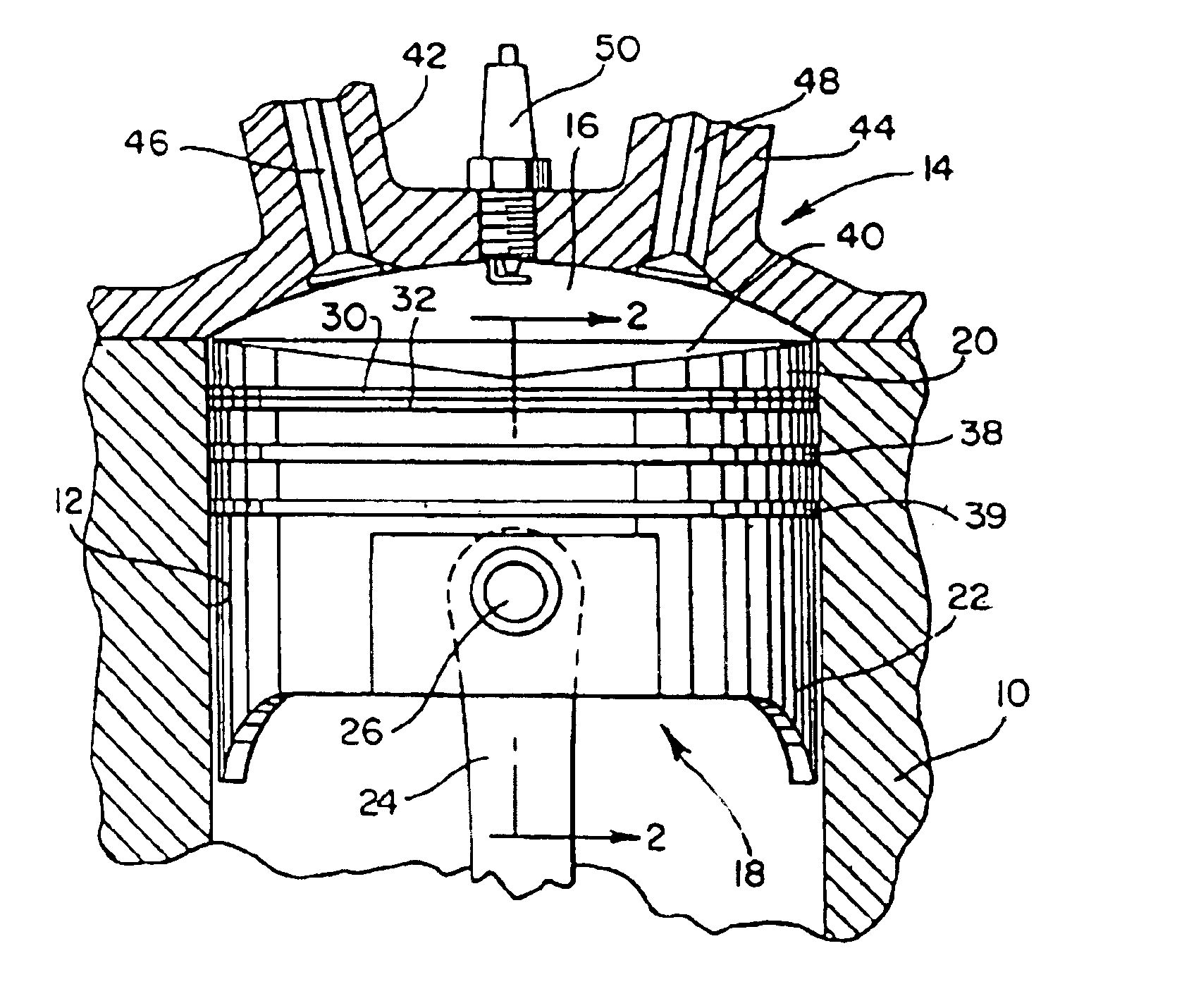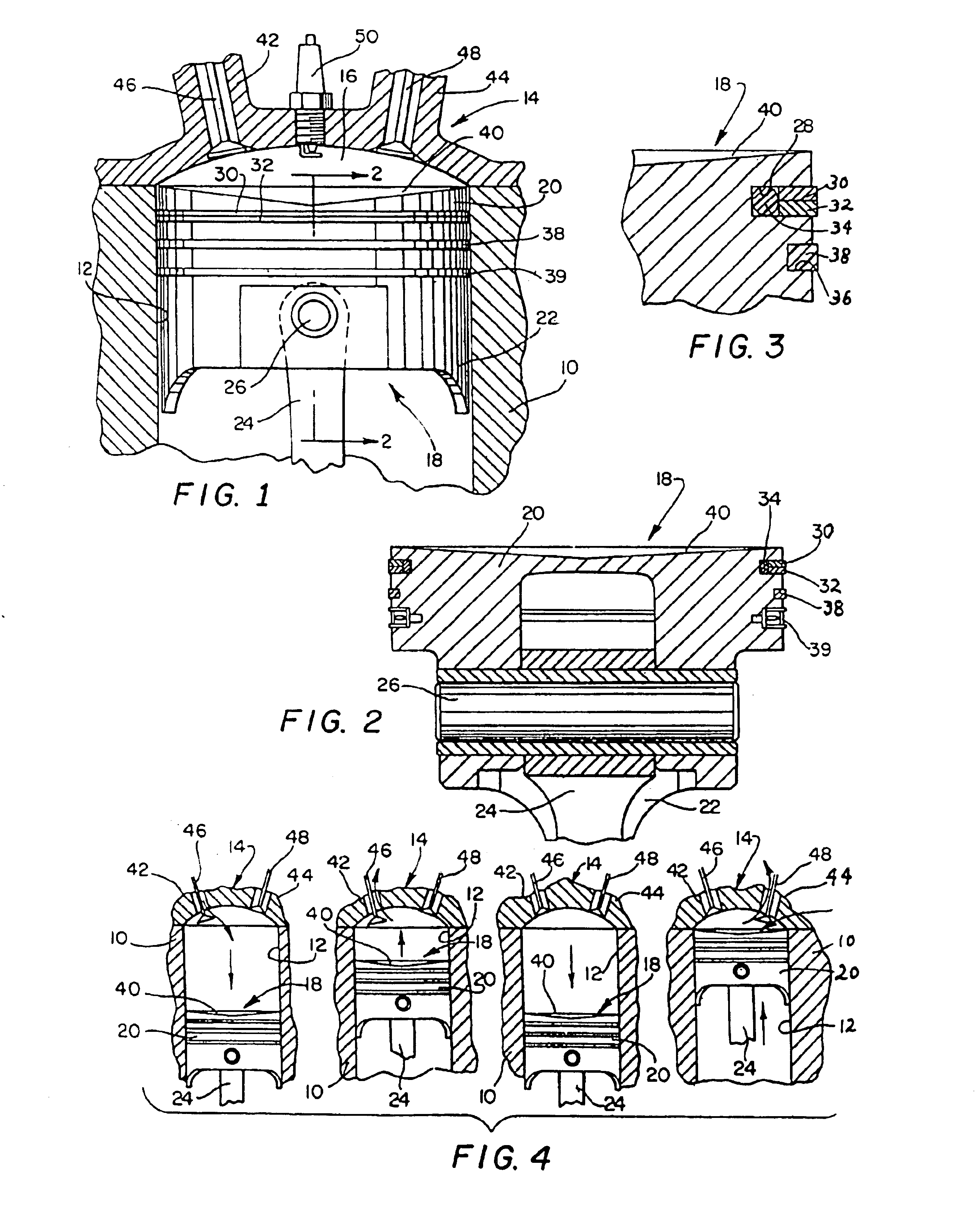Internal combustion engine
- Summary
- Abstract
- Description
- Claims
- Application Information
AI Technical Summary
Benefits of technology
Problems solved by technology
Method used
Image
Examples
Embodiment Construction
One of the essential features embodied in the present invention is the replacement of conventional gapped metallic compression rings as used with the piston with either a combination of a non-metallic ring and a metallic ring or just a non-metallic ring. The sealing can be accomplished with one or more of the rings as disposed in the annular grooves or lands formed in the engine piston and it is contemplated that no more than two compression rings as received in the appropriately formed lands would be utilized. The oil rings that are normally utilized in piston constructions in internal combustion engines remain as a conventional part of the piston of the subject invention.
Referring now to the drawing and particularly to FIGS. 1-3, a portion of an engine construction as embodied in the subject invention is illustrated, the engine block being indicated at 10. It is understood that the block 10 is only representative of a conventional construction and that the complete block will be f...
PUM
 Login to View More
Login to View More Abstract
Description
Claims
Application Information
 Login to View More
Login to View More - Generate Ideas
- Intellectual Property
- Life Sciences
- Materials
- Tech Scout
- Unparalleled Data Quality
- Higher Quality Content
- 60% Fewer Hallucinations
Browse by: Latest US Patents, China's latest patents, Technical Efficacy Thesaurus, Application Domain, Technology Topic, Popular Technical Reports.
© 2025 PatSnap. All rights reserved.Legal|Privacy policy|Modern Slavery Act Transparency Statement|Sitemap|About US| Contact US: help@patsnap.com


